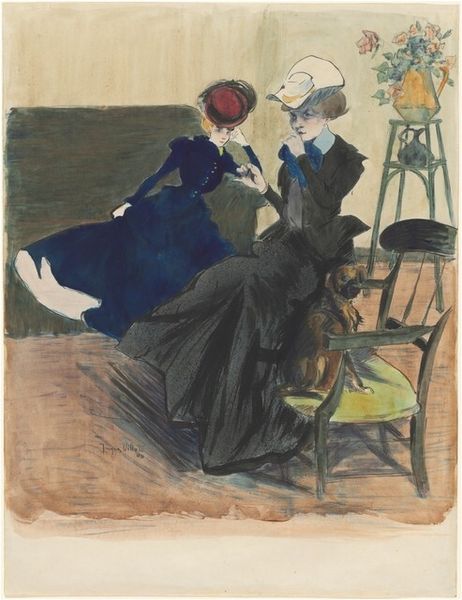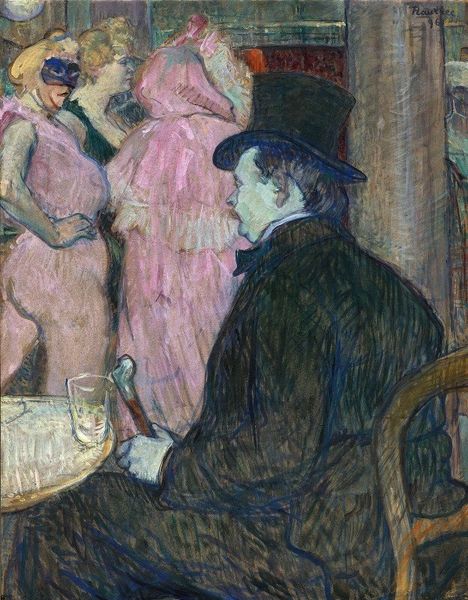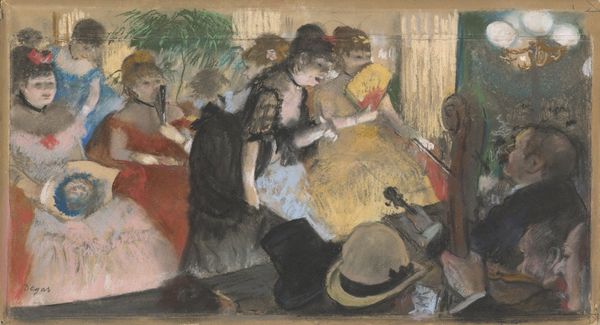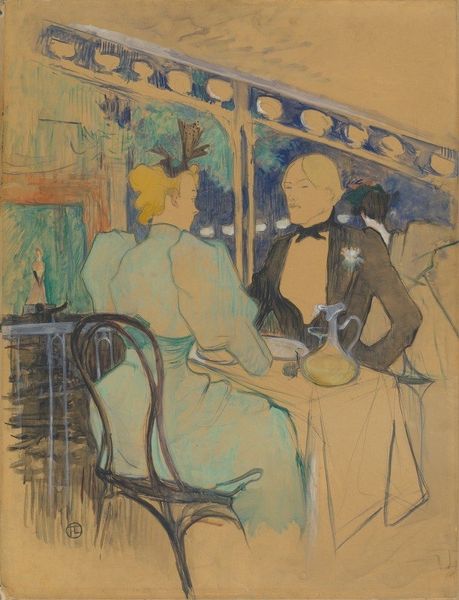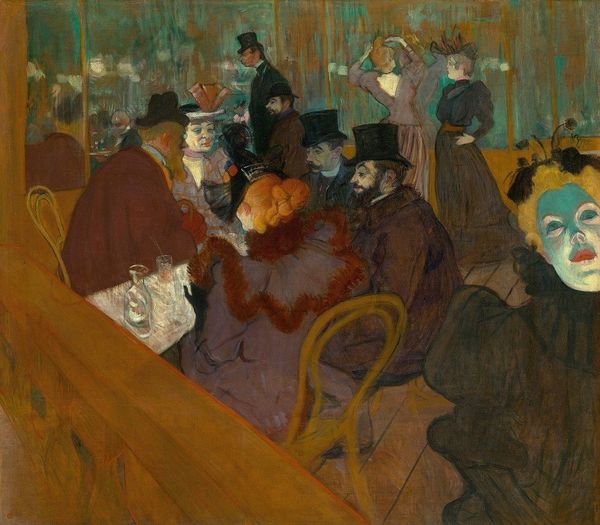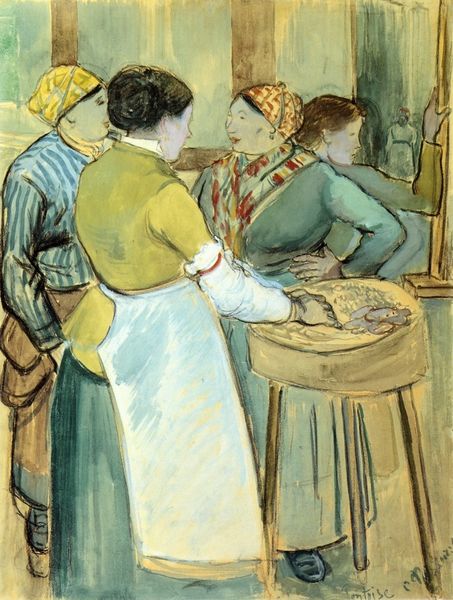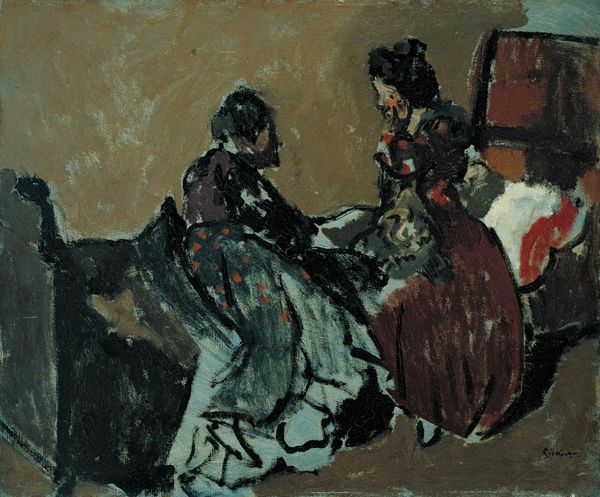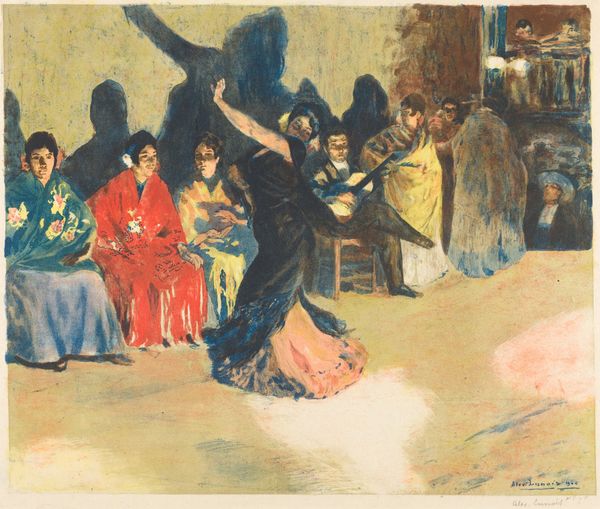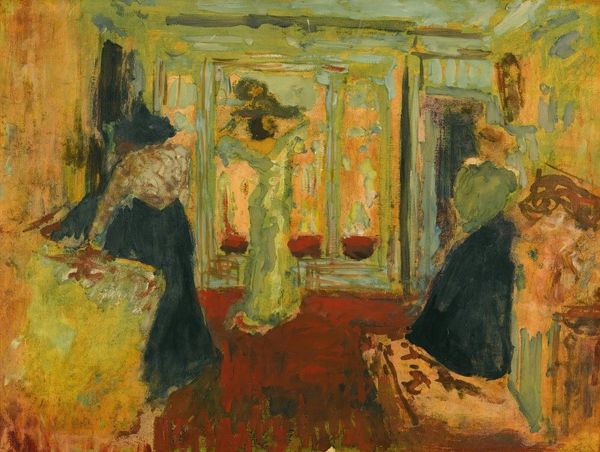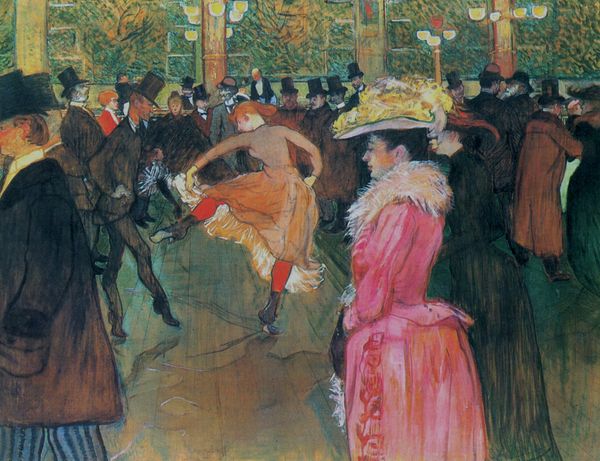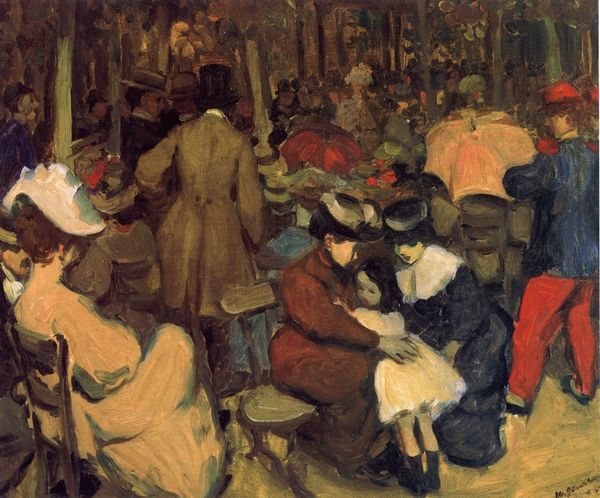
Copyright: Public Domain: Artvee
Henri de Toulouse-Lautrec made "Quadrille at the Moulin Rouge" with oil on cardboard, a distinctly modern choice of material. Cardboard in the late 19th century wasn't just packaging; it was a readily available and inexpensive surface that freed artists from the constraints of traditional canvas. In this instance, its absorbency gives the painting a matte, almost ephemeral quality, contrasting with the vibrant, energetic scene. Lautrec embraced the material's flatness, using loose brushstrokes to capture the frenetic energy of the Moulin Rouge. The choice of cardboard speaks to a shift in artistic practice, where immediacy and accessibility were valued over the preciousness of traditional materials. It also ties into the commercialization of art, as Lautrec's work often blurred the lines between fine art and advertising. The rough texture and visible fibers of the cardboard become part of the artwork's identity, adding to its raw, unfiltered portrayal of Parisian nightlife. In essence, the materiality of "Quadrille at the Moulin Rouge" is inseparable from its subject matter, embodying the spirit of modernity and challenging conventional notions of artistic value.
Comments
No comments
Be the first to comment and join the conversation on the ultimate creative platform.
